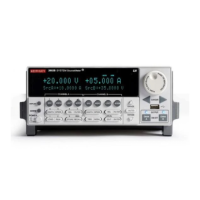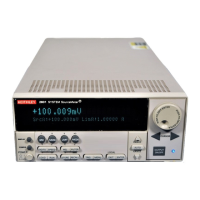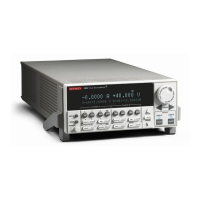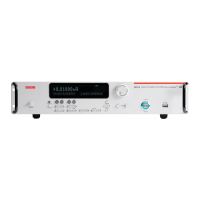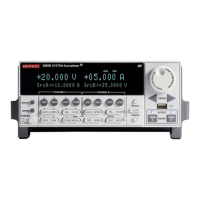System SourceMeter® Instrument Reference Manual Section 2:
2600BS-901-01 Rev. C / August 2016 2-79
To set the current limit in NORMAL output-off mode remotely:
smuX.source.offlimiti = iValue
To set the voltage limit in NORMAL output-off mode remotely:
smuX.source.offlimitv = vValue
* smuX: For Models 2601B, 2611B, and 2635B, this value is smua (SMU Channel A); for Models
2602B, 2604B, 2612B, 2614B, 2634B, and 2636B, this value can be smua (for SMU Channel A) or
smub (for SMU Channel B).
Remote programming output-off states quick reference
The content of the following table is a quick reference of commands for programming output-off states
from a remote interface.
Output-off state programming quick reference
Command* Description
smuX.source.offmode = smua.OUTPUT_NORMAL
Selects normal output-off mode.
smuX.source.offmode = smua.OUTPUT_HIGH_Z
Selects high-impedance output-off
smuX.source.offmode = smua.OUTPUT_ZERO
Selects zero output-off mode.
smuX.source.offfunc = smua.OUTPUT_DCVOLTS
Sets 0 V output with current limit
specified by the
smua.source.offlimiti
smuX.source.offfunc = smua.OUTPUT_DCAMPS
Sets 0 A output with voltage limit
specified by the
smua.source.offlimitv
smuX.source.offlimiti = iValue
Sets current limit in normal
output-off mode.
smuX.source.offlimitv = vValue
Sets voltage limit in normal
* smuX: For Models 2601B, 2611B, and 2635B, this value is smua (SMU Channel A); for Models 2602B,
2604B, 2612B, 2614B, 2634B, and 2636B, this value can be smua (for SMU Channel A) or smub (for SMU
Channel B).
USB storage overview
The Series 2600B System SourceMeter
®
instrument includes a USB port on the front panel. To store
scripts and to transfer files from the instrument to the host computer, you need a USB flash drive.
• For information about saving reading buffers to the USB flash drive, see Saving reading buffers
(on page 3-9).
• For information about storing and loading scripts to and from the USB flash drive, see Save a
user script (on page 6-8).
• For information about file I/O, see File I/O (on page 5-7).
• For information about saving user setups, see Saved setups (on page 2-47).
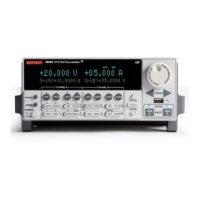
